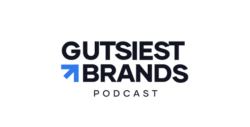New product development is crucial to staying ahead of the competition and ensuring relevance in highly competitive and fast-moving markets such as the TMTE landscape. Tech companies need to see past the functionality of new product features as consumers are faced with increasing choice and rapid imitation. They also need to ensure their innovations deliver new, relevant experiences for consumers and promote these benefits beyond the tech specifications.
On the other hand, media and entertainment companies need to continuously develop content and services that engage audiences and retain their attention over time. That’s especially important considering that the growth of home entertainment during recent years and the proliferation of news services vying for their preference and spend.
Keeping ahead in such highly competitive markets relies on constant innovation, and CMOs know it, too. In fact, a recent survey from Gartner found that 45% of CMOs planned to introduce new products as their primary strategy to fuel growth in 2021.
However, a lot of resources are required to bring new products and services to market—making it a risky proposition in the absence of proper planning. How can you ensure your next TMTE NPD initiative is a success? These three questions will help shape your approach and identify the proper tools and methods needed—regardless of where you stand in the new product development cycle.
What are the objectives for your NPD effort?
It may seem like a matter of common sense, but having clarity on the goal of your NPD effort will enable you to identify the research tools and methods that are best for your needs. Many new products and services operate as extensions of existing ones—tech companies are increasingly adopting an MVP (Minimum Viable Product) approach and releasing enhancements throughout the product lifecycle—while others are aimed at developing an entirely new experience and business opportunity. Knowing where you stand will help frame your choices for gathering data.
Some other questions to consider:
• What is unique and different about the products/services you offer?
• Where are there gaps in consumer needs that your brand can credibly own?
• What are the strengths of your current portfolio? Will existing products or services suffer from the introduction of new ones?
• Taking the long view, which areas of the portfolio are you updating or replacing?
• What is the current competitive context? Moving quickly is often the key to outmaneuvering your competitors.
What data is needed to answer those objectives?
Wherever you are in the development process, there could be more than one relevant solution from a research perspective. And each can provide answers on different aspects of your initiative. Ultimately, that breadth of learning provides you with more and richer data, which, in turn, enables evidence-based decision-making.
That evidence-based decision-making needn’t come at the expense of speed, either. Modern automated technologies have made it possible to get high-quality data without sacrificing time. In fact, we’ve had cases where 60+ claims were being tested in multiple markets, and the turnaround time for results was less than 24 hours.
What decisions will you make with that data?
In the early stages of the new product development cycle, you may be looking for solutions that help you prioritize and focus on the right ideas. If you’re closer to taking that product or service to market, you’ve likely moved on to assessing potential. That’s not to suggest that NPD is always a linear process. In fact, you may choose to re-work or re-validate certain stages, such as when testing new copy or creative. However, all of this should be considered when determining your research methods and identifying research tools. Put simply: what is the critical information you need to validate your plan, and what are your nice-to-haves?
Putting the NPD framework in action in TMTE
To understand how you can put this framework into action, consider this example of a global media owner that approached Toluna ahead of launching a new entertainment service.
What are your objectives? This global media owner was struggling to launch a new entertainment service under limited time constraints. With only a few weeks for refining development and positioning, their objective was to develop an agile, end-to-end NPD research approach that would guide decision-making.
What data is needed to answer those objectives? Before the entertainment service could be launched, the client sought to identify audience needs and screen through concept ideas by utilizing two rounds of Live Discussions. After receiving consumer feedback and developing prioritized concepts, they were ready to move into quantitative testing.
What decisions will you make with that data? Using the Toluna Start platform, they were able to identify a winning concept and optimize its positioning, all within a week of starting the research process. The efficiency of the solution and the ability to combine research methods ensured that the client had support for each stage of the NPD process, thus maximizing the success of their launch.
Keeping these questions in mind throughout the NPD cycle will enable you to derive productive, actionable use of all the data and insights that a robust research plan can provide.



 Back to Blog
Back to Blog

